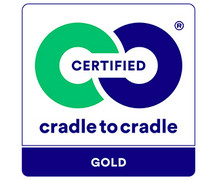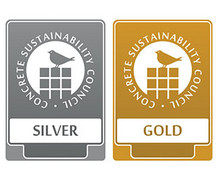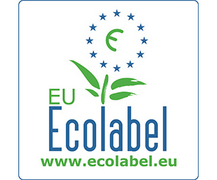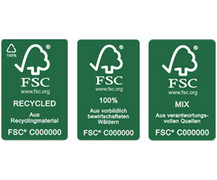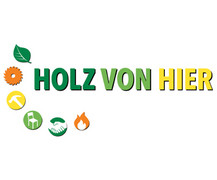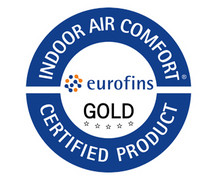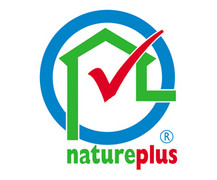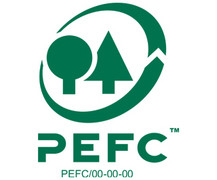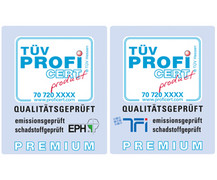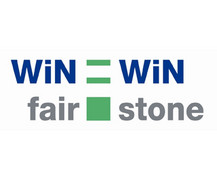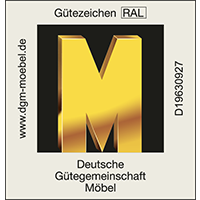Construction products play an essential role in achieving sustainability goals in buildings or neighbourhoods. They contribute significantly to the overall performance of a building through their environmental impacts, such as pollutant emissions or energy consumption during manufacture, operation or deconstruction; their life cycle costs, which are significantly influenced by, for example, inspection and maintenance costs or cleaning requirements; and their impact on user comfort.
Quality certifications for building products are often established and validated by product labels from standard-setting organisations. These are designed to help clients and specifiers quickly and reliably assess whether the quality meets their requirements. There are a large number of labels for construction products. The DGNB has developed a procedure for recognising product labels in order to provide guidance to designers and customers. This procedure is based on the following criteria.
Requirement types
Within the framework of the recognition procedure of standards, compliance with minimum requirements, for the time being exclusively for criterion ENV1.3, is a prerequisite for recognition of a standard.
Primary and secondary raw materials:
- extracted, mined or manufactured without the use of child or forced labour
- or illegal extraction or production has been excluded
The recognition of standards for the criterion ENV1.2 and TEC1.6 is currently not explicitly required.
In the recognition procedure for standards, the systemic requirements must be provided as evidence. The credibility of a standard is to be verified on the basis of the systemic requirements.
The following systemic requirements must be fulfilled for criteria ENV1.3 to be recognised. In the case of recognition of standards for criteria ENV1.2 and TEC1.6, other requirements may be included in some sub-aspects due to the standard. Deviations from the systemic requirements below may be accepted for recognition.
It is important that the organisation setting the standard has procedures and processes in place to ensure that the requirements in the following areas are met:
- Transparency and accessibility
The standard clearly communicates the objectives for which it stands. The sponsorship, structure and procedures ( basic principles of process and implementation management as well as the structure of the control systems) as well as the composition and working methods of the decision-making bodies of the standard-setting organisation are public and freely accessible. Participation in certification according to the standard is freely accessible to everyone.
If the system requirements of the standard are met, the applicant receives a licence or certificate from an independent third party. The award criteria of the certification system are based on scientifically and technically sound principles. Award criteria, award bases, award and control procedures are clearly and comprehensibly documented and published in a suitable form. Information on certification performance, complaints system (all levels: system, supply chain, production and certification bodies) are documented and accessible.
- Objectivity and impartiality
If the system requirements of the standard are met, the applicant receives a licence or certificate from an independent third party. The award criteria of the certification system are based on scientifically and technically sound principles. Award criteria, award bases, award and control procedures are clearly and comprehensibly documented and published in a suitable form. Information on certification performance, complaints system (all levels: system, supply chain, production and certification bodies) are documented and accessible.
- Awarding principles and monitoring mechanisms
Compliance with the award criteria is subject to comprehensive and regular monitoring at individual farm level. A clear statement on the period of validity and any possible extension of the period of validity of the licence or certificate shall be announced in connection with the award of the licence or certificate. Required control mechanisms to be complied with are public and freely accessible. Failure to comply with awarding procedures is detected and/or sanctioned.
- Reference to standard
The award criteria of the standard are defined on the basis of norms and refer to requirements that are necessary to achieve the objectives of the certification scheme.
- Preparation and further development
The application of the standard promotes its objectives. The results are recorded through a monitoring and evaluation process. Insights for improving the system are incorporated into the regular revision of the standard. The results are published and freely available. The process of preparing and developing the standard includes open consultation with experts and interested parties.
- Alternative
The standard-setting organisation can alternatively provide evidence that the systemic requirements of the DGNB label recognition are met on the basis of the application of EN ISO 140024 or DIN EN ISO/IEC 17065 or equivalent international principles.
How to get recognition for your label
Possibility of recognition for standard-setting organisations
The DGNB label recognition does not determine the quality of a label as a whole, but is to be understood as a conformity check of the label requirements with selected criteria contents. The outcome of the procedure is a list of product labels that evolves over time and fulfils the objectives of the individual quality levels in the criteria through externally verified evidence based on transparent rules.
The DGNB offers standard-setting organisations the opportunity to be labelled as DGNB Recognised Standard. This procedure is open to all label providers who meet the content and formal requirements of the DGNB and issue declarations or certificates for construction products or components. The basis for DGNB label recognition is the currently valid criteria of the German version.
Recognition procedure for the DGNB label
The recognition procedure is characterised by five steps. This procedure ensures that high quality and comprehensible results are available.
The DGNB offers standard-setting organisations the opportunity to apply to the DGNB for recognition of their label for defined criteria content. The defined criteria contents and the standard-setting organisations' details required for the assessment are published on the DGNB website. Defined criteria contents are usually quality levels formulated in the criteria and, if applicable, defined application areas (e.g. product groups). They can also only include parts of quality levels, as in the example of criterion ENV1.2, where label recognition only applies to defined contents in defined rows of the criteria matrix.
The content-related requirements can be found in the document Content-related and systemic requirements for label recognition or in the corresponding DGNB criteria. In addition, so-called systemic requirements must be demonstrated, which can also be found in the above-mentioned document.
Standard setters apply to the DGNB with all the evidence identified by the DGNB as relevant for examination. The evidence must clearly and comprehensibly substantiate the substantive objectives formulated by the DGNB in the DGNB criteria by direct reference to the standard-setting organisation's documents. In addition, the standard-setting organisation must demonstrate compliance with the DGNB systemic requirements necessary for recognition.
These formal requirements may vary in scope depending on the criterion and are published in the document Content and systemic requirements for label recognition on the DGNB website.
The application must be accompanied by all documents to be examined in accordance with the Application documents for label recognition specified by the DGNB. In its application documents, the standard-setting organisation specifies the scope in the form of a building product category and is guided by the categorisation system of the DGNB Navigator.
An internal committee of the DGNB checks the application documents for completeness and compliance with the content-related and systemic requirements formulated by the DGNB. If necessary, external experts are consulted. Until all open questions have been clarified, consultation with the standard-setting organisation takes place. It is a prerequisite that all required verifications are available and that references of the requirements to the documentation are clearly marked by the applicant.
The DGNB prepares a short test report and informs the applicant about the result of the test. At the same time, a request is made as to whether the applicant recognises the result and whether the results may be published. If the applicant confirms the request, the label is named on the DGNB website and the test report is published. The prerequisite is that the DGNB has confirmation from the standard organisation. Furthermore, the basis for DGNB label recognition is a contract between the standard-setting organisation and DGNB GmbH, which regulates the course of the recognition procedure as well as the obligations and rights of the parties.
No later than one year after approval or in the event of justified interest on the part of the DGNB, the DGNB requests the standard-setting organisation to confirm the validity of the initial assessment by signature of a responsible representative or, in the event of deviations (e.g. changes to the award criteria), to provide additional or new evidence.
If no confirmation is received after a period of 3 months or if the required evidence is not provided, the organisation's label can be removed from the list of recognised labels.
Documents for label recognition
For DGNB members, there is no charge for the audit services (standard payment). Non-members are requested to refer to the contractual documents for information on the payment of the assessment services:
Reference label
In addition to the standards that are recognised via the label recognition procedure as part of the DGNB certification, the DGNB criterion ENV1.2 names other labels whose requirements correspond to the requirements for materials and aspects formulated in the criterion. These are marketable labels that were used as a reference during the development of the DGNB criterion in order to simplify the verification process when applying the DGNB system.
In the criteria matrix of criterion ENV1.2 of the certification systems for new buildings and interiors, reference is made to the following labels:
New construction of buildings and interiors:
- RAL-UZ 12a for QS3 and 4
In line 1: VOC; Coatings on non-mineral substrates: Metals, wood, plastics. - RAL-UZ 102 for QS3 und4
In line 2: SVOC; Coatings on predominantly mineral substrates in the interior as well as on wallpaper, fleece, plasterboard, etc. - RAL-UZ 128 in all QS
In line 6: VOC /hazardous substances; textile floor coverings. - RAL-UZ 113 in all QS
In line 8: VOC ; Primers, undercoats, fillers and adhesives under wall and floor coverings.
Innenräume:
- RAL-UZ 38
In Zeile 1: VOC; Kastenmöbel mit Emissionszertifikaten
New construction of buildings and interior fittings:
- In line 8: VOC ; Primers, undercoats, fillers and adhesives under wall and floor coverings.
- In line 9: VOC ; Barrier coatings, screed resins, sealants under tiles.
- In line 11: VOC; Sealants, caulks, adhesives for point and line bonding of interior building components.
- In line 13: VOC; Assembly adhesives and sealants on the facade, windows and external doors.
Emicode EC1Plus
- In line 38: Halogenated and other blowing agents, solvents, plasticisers, flame retardants; Aassembly foams , which do not have to fulfil the requirements according to B1 or ≥ C (except bonding of insulation materials).
Your contact
E-mail: labelanerkennung@dgnb.de





